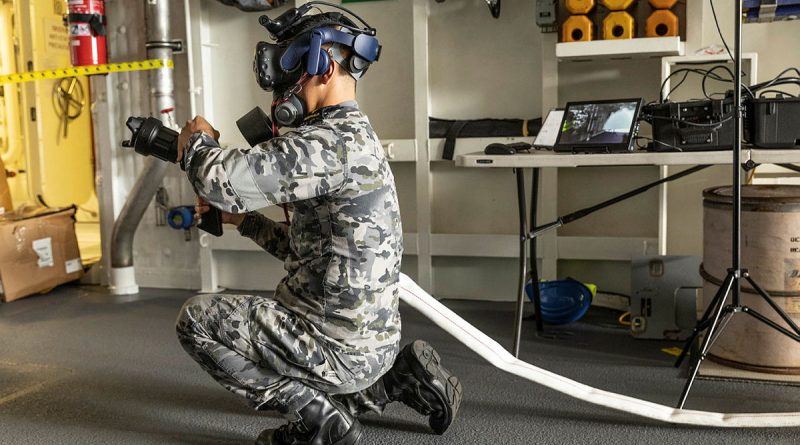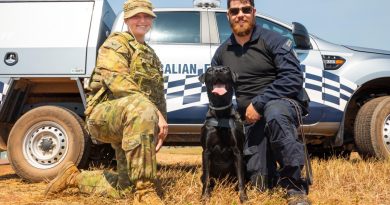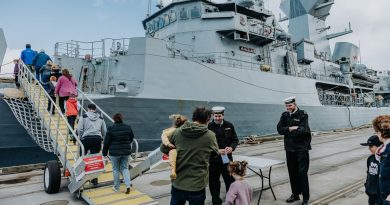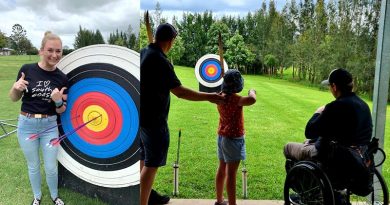Navy tries virtual firefighting training system
Share the post "Navy tries virtual firefighting training system"

The Royal Australian Navy has trialled a new firefighting training system that uses a combination of virtual and augmented reality.
CAPTION: Able Seaman Kevin Tran uses the virtual reality damage control system on board HMAS Brisbane at Fleet Base East, Sydney. Story by Meg Van Lohuizen. Photo by Able Seaman Allanson.
A headset transforms the surrounding environment into a simulated firefighting exercise.
The user wears an oxygen mask and heat vest while holding a 3D printed fire hose nozzle, which measures water usage. The nozzle is connected to a recoiling and reactive hose reel, simulating real hose forces and challenging the techniques of the trainee.
The equipment also measures the breathing rate, body temperature and heart rate of the trainee to monitor their performance.
The Royal Australian Navy School of Survivability and Ship Safety trialled the technology on board HMA Ships Brisbane, Gascoyne, Warramunga and Arunta, as well as at Navy’s fleet innovation section at Garden Island.
Stores operator Able Seaman Kevin Tran used the technology on the flight deck and said it was practical training in his everyday space.
“I liked that it was on the ship in a space we are familiar with,” Able Seaman Tran said.
“I thought it was pretty realistic, being able to feel the hose kicking back at me.
“You can feel the heat through the vest and see the water and how your technique is.”
The training system was the product of a joint initiative between Navy, Defence Innovation Hub and Deakin University.
Deakin University Professor Saeid Nahavandi said the technology was designed to assist with the training and maintenance of firefighting skillsets.
“The technology we are using combines virtual reality, augmented reality and haptics,” Professor Nahavandi said.
“The idea was to create a hot fire trainer that Navy personnel can take on board to create a virtual fire in a real environment.”
The technology was developed in conjunction with Navy to stay up to date with future software changes.
“We are trying to help the Navy get future ready,” Professor Nahavandi said.
“The way we have designed and built the system in terms of its processing capability is actually ready for the next two to three years.”
Trials on the technology are expected to finish in late 2023.

CAPTION: Lieutenant Commander Paul Fawbert, from the School of Survivability and Ship Safety, left, takes Able Seaman Lucinda Allanson through the virtual reality firefighting training system. Photo by Able Seaman Benjamin Ricketts.
.
.

.
.
Share the post "Navy tries virtual firefighting training system"





